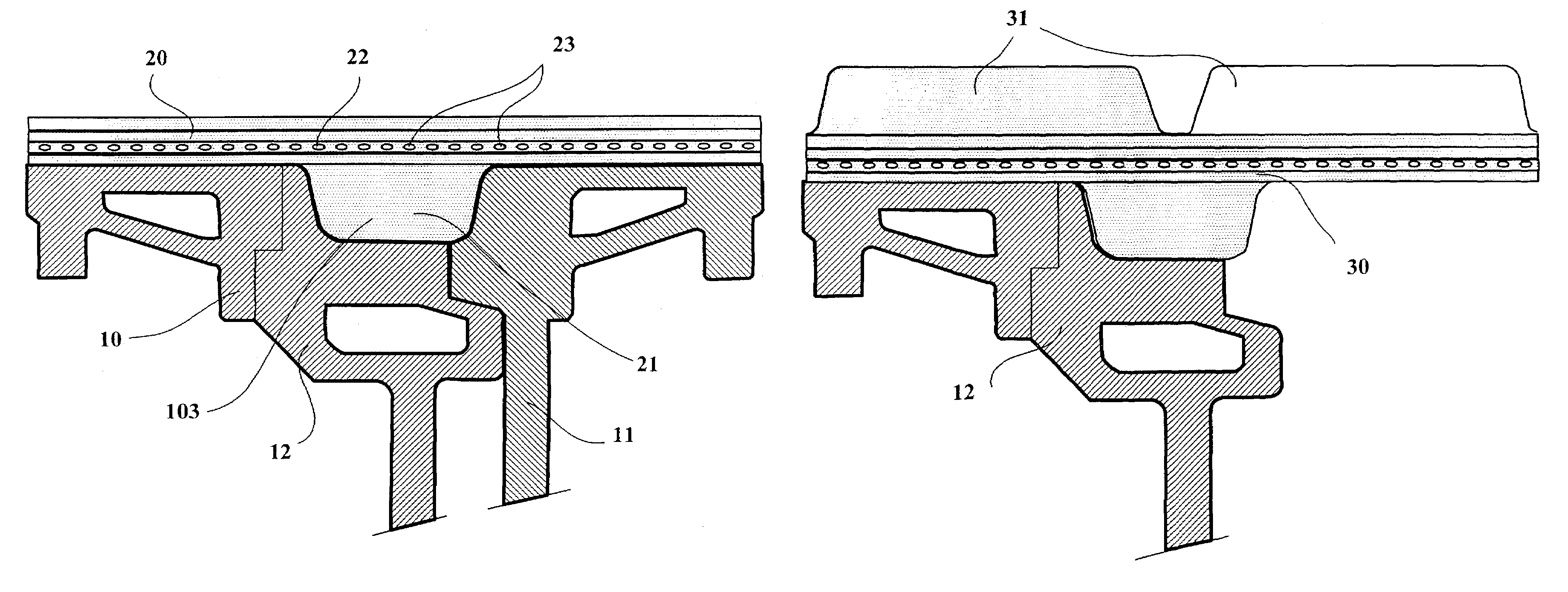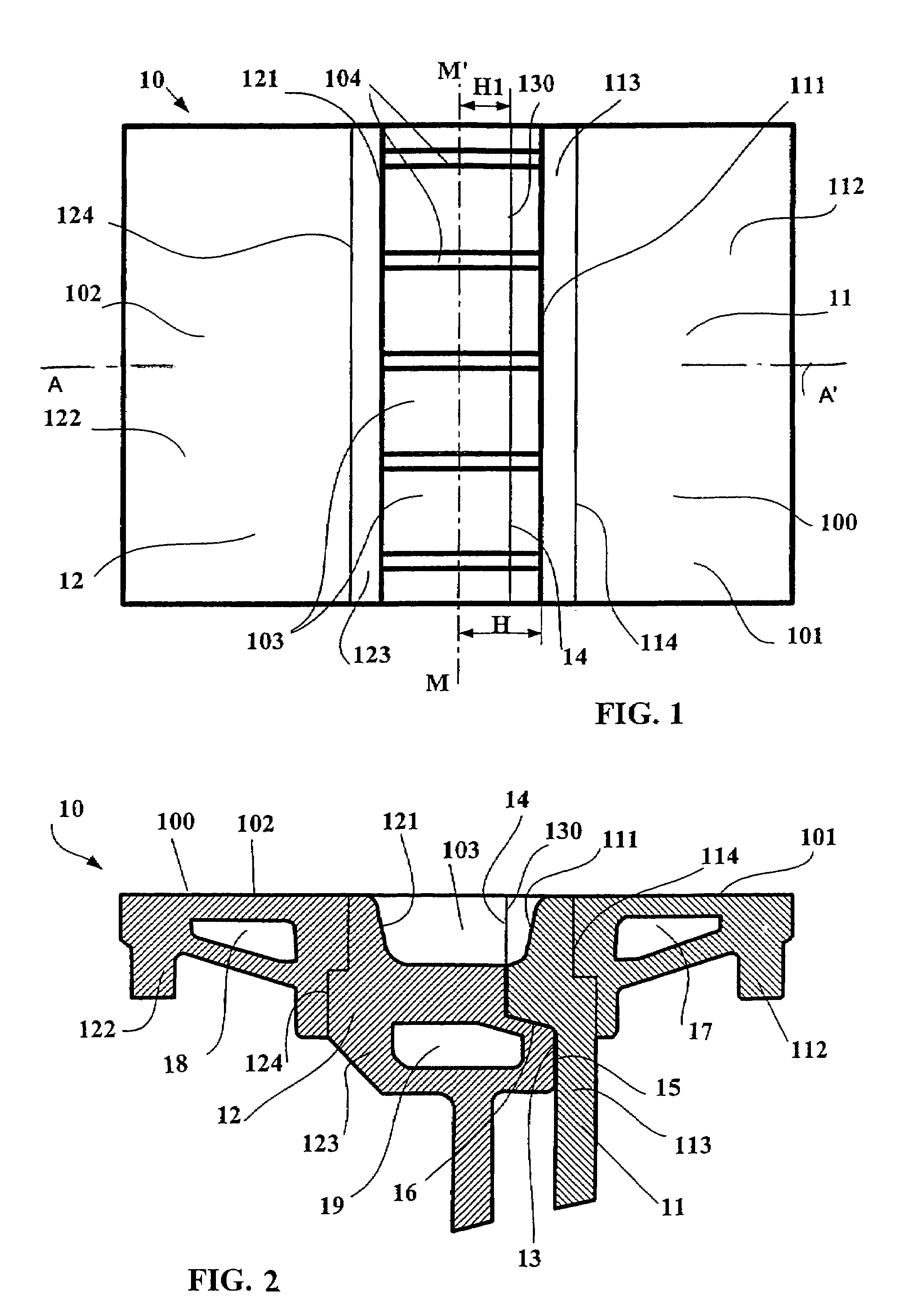Process for manufacturing a track and stripping device
a manufacturing process and technology for stripping devices, applied in the field of manufacturing a track and stripping device, can solve the problem of requiring a complex drum production
- Summary
- Abstract
- Description
- Claims
- Application Information
AI Technical Summary
Benefits of technology
Problems solved by technology
Method used
Image
Examples
Embodiment Construction
[0055]FIGS. 1 and 2 show partial views of the same inner mold 10 intended to be used to manufacture a track blank. In FIG. 2, showing a radial cross section of the mold 10 (that is to say, containing the axis of the inner mold), there can be seen a first cylindrical die-half 11, whose axis merges with the axis of the inner mold, and a second cylindrical die-half 12, whose axis also merges with the axis of the inner mold, the die-halves being represented in the assembly position before the start of manufacture of a new track. Once assembled, the die-halves 11, 12 are in contact along a joint surface 13 (FIG. 2) formed in the present case from two flat surfaces 14, 15 perpendicular to the axis of the inner mold 10 and from a frustoconical surface 16 of the same axis, the frustoconical surface 16 linking the flat surfaces 14, 15. Clamping means (diagrammatically represented in FIG. 11) keep the die-halves 11, 12 securely attached throughout the stage of manufacturing and molding the tr...
PUM
| Property | Measurement | Unit |
|---|---|---|
| circumference | aaaaa | aaaaa |
| distance | aaaaa | aaaaa |
| mechanical behavior | aaaaa | aaaaa |
Abstract
Description
Claims
Application Information
 Login to View More
Login to View More - R&D
- Intellectual Property
- Life Sciences
- Materials
- Tech Scout
- Unparalleled Data Quality
- Higher Quality Content
- 60% Fewer Hallucinations
Browse by: Latest US Patents, China's latest patents, Technical Efficacy Thesaurus, Application Domain, Technology Topic, Popular Technical Reports.
© 2025 PatSnap. All rights reserved.Legal|Privacy policy|Modern Slavery Act Transparency Statement|Sitemap|About US| Contact US: help@patsnap.com



